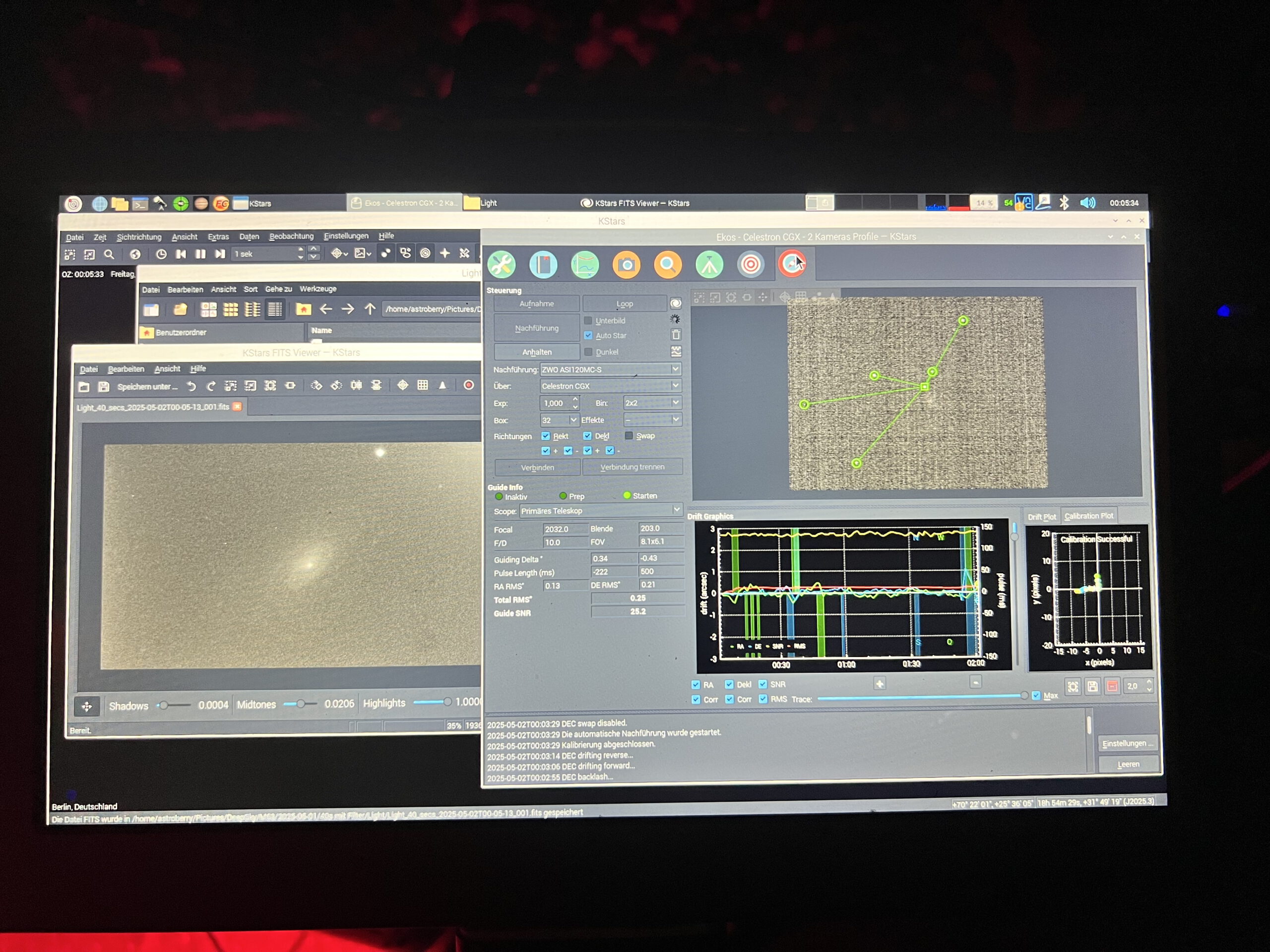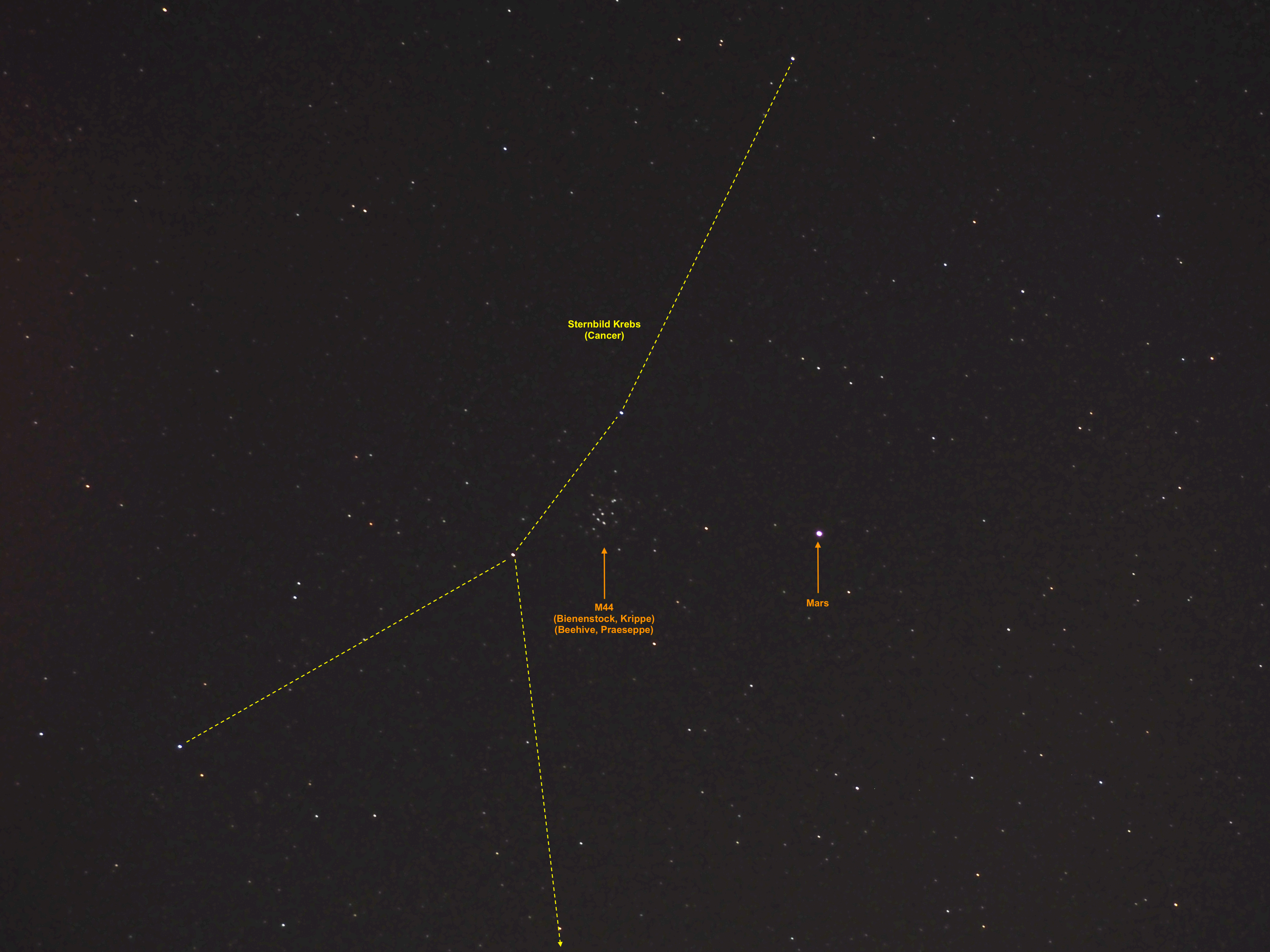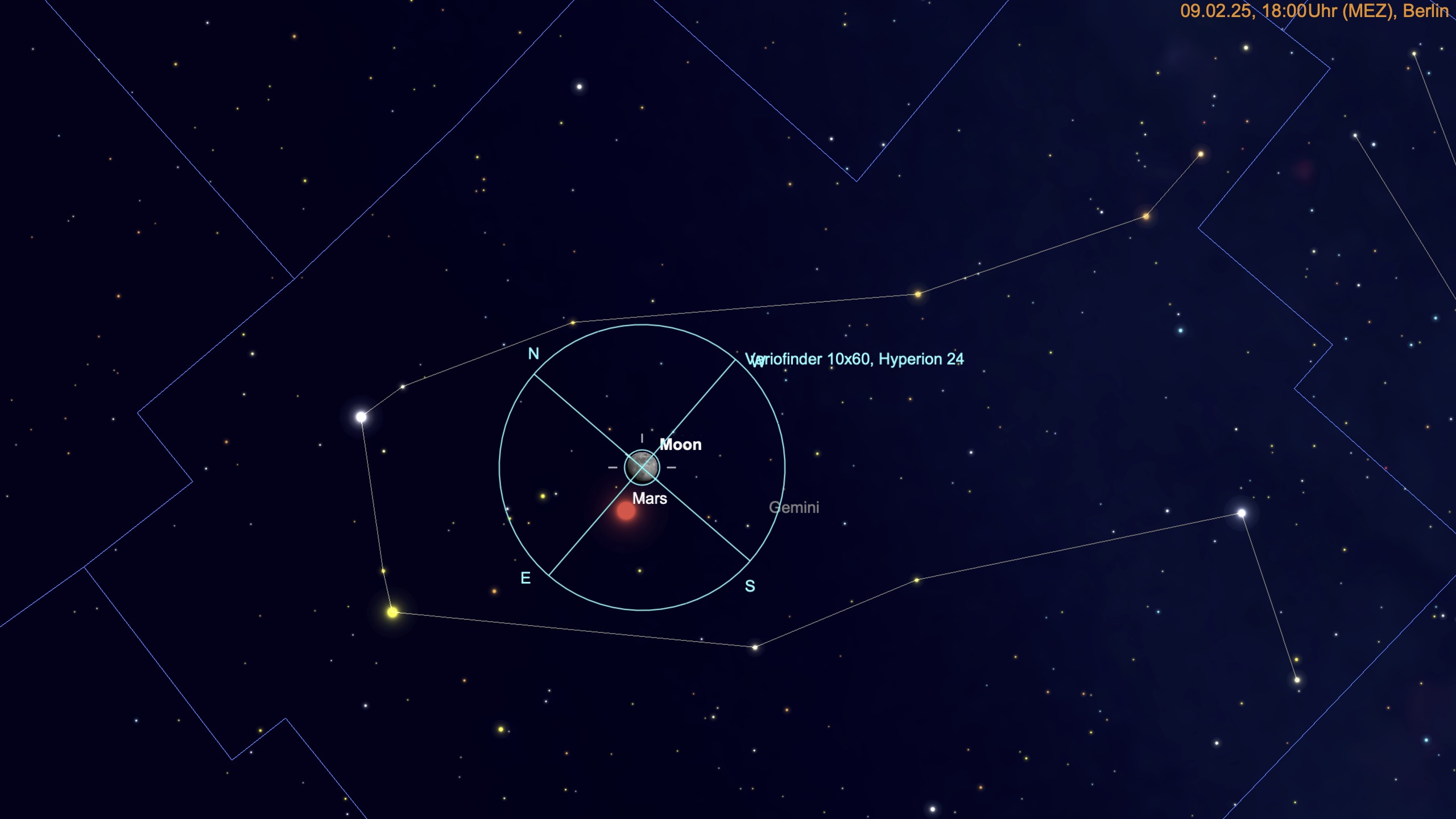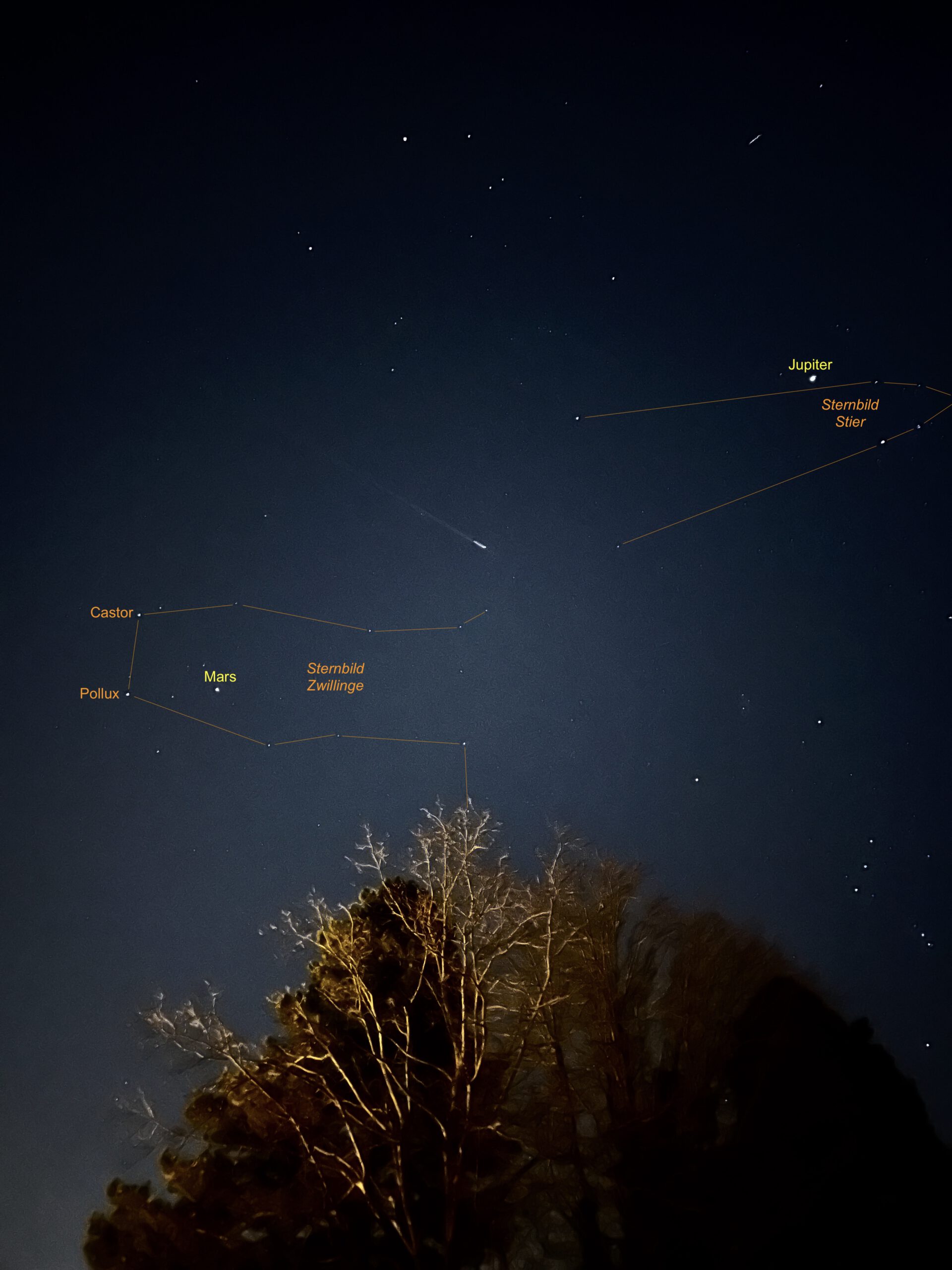In der Nacht vom vergangenen Samstag zu Sonntag stellte ich das Teleskop auf die Terrasse. Einerseits, um mich wieder ein wenig in die Astrofotografie für Deep Sky Objekte einzufuchsen. Aber auch um die Annäherung des Mars an den Sternhaufen M44 beim Sternbild Krebs zu betragen (siehe diesen Blogartikel). Der Mars ist dem Sternhaufen näher gekommen:
Tag: Mars
Den Mars kann man schon seit einigen Monaten am Himmel betrachten. Nachdem er im Sternbild der Zwillinge zu sehen ist, bewegte der Mars sich nun auf das Sternbild Krebs zu. Er wird auf den Sternhaufen M44 treffen. Dieser wird (Futter-) Krippe (Praesepe) und im englischen Sprachraum Beehive Cluster (Bienenstock) genannt. M44 kann unter guten Bedingungen … Read More “Astro-Quickie: Mars auf dem Weg zum Bienenstock (M44)” »
Der Februar glänzt derzeit mit der Planetenparade Venus, Jupiter und Mars (siehe meine Ode an die Planetenparade). Heute Abend kommt der Mond beim Mars an:
Venus flieht der Nacht,Jupiter hält Wache dort,Mars zieht leise fort. Derzeit sind abends die Venus, Jupiter und der Mars von Westen bis hin zum Osten verteilt am Himmel zu bewundern. Die Venus ist DER Abendstern kurz nach Sonnenuntergang und am frühen Abend hoch im Westen. In südlicher Richtung folgt der Jupiter, der ab dem frühen … Read More “Astro Quickie: Ode an die Planetenparade” »
Es ist derzeit eine Seltenheit an meinem Standort: gesamte Nacht ohne Wolken. Daher konnte meine Allsky Kamera in der vergangenen Nacht die verbliebene Planetenparade dieses Monats einfangen. In der zweiten Nachthälfte bilden Mars, Jupiter und Saturn eine Ketten vom östlichen zum südlichen Bereich des Sternhimmels. Der Saturn erreicht übrigens am 14. August seine Oppositionsstellung, siehe … Read More “Planetenparade mit der Allsky Kamera” »
Wenn man das Glück für einen wolkenlosen Himmel hatte, konnte man die Bewegung des Mars zum Goldenen Tor der Ekliptik während der letzten Abende gut beobachten. Siehe hierzu auch meinen Beitrag vom 1. März, sowie meine astronomische Monatsvorschau. Das Goldene Tor der Ekliptik ist der Bereich zwischen den beiden Sternhaufen der Plejaden und Hyaden: Mit … Read More “Der Mars steht im Goldenen Tor der Ekliptik” »
In meiner Monatsvorschau angekündigt, und jetzt dank freiem Himmel auch zu beobachten: der Mars klopft an das Goldene Tor der Ekliptik. Dieses Tor wird von den beiden Sternhaufen Plejaden und Hyaden im Sternbild Stier gebildet. Nachfolgend der Anblick für Morgen. Der Mars steht nahe bei den Plejaden, ist aber noch ein bisschen vom Tor entfernt. … Read More “Ob die Plejaden und Hyaden den Mars durch das Goldene Tor der Eklipik lassen?” »
… Es ist der Mars, schau hin geschwind. Der Mars ist derzeit sehr gut am Nachthimmel zu sehen, im AllSky Film mittig. Am 14. Oktober steht er in Opposition. Das heißt, dass die Erde genau auf der Verbindungslinie von Sonne und Mars steht. Sonne und Mars stehen von der Erde aus gesehen also genau gegenüber. … Read More “Wer leuchtet so spät durch Nacht und Wind? …” »
Front Page / Titelseite Preparing the Perseverance Mars Rover to Collect Samples on the Red Planet The samples Apollo 11 brought back to Earth from the Moon were humanity’s first from another celestial body. The upcoming Perseverance rover mission will collect the first samples from another planet. read more … https://ift.tt/2Xrkirg via NASA Image of … Read More “Weekly Spacecraft Mission News (English, German) – 11.06.20” »
Front Page / Titelseite NASA ‘Optometrists’ Verify Mars Perseverance Rover’s 20/20 Vision Equipped with visionary science instruments, the Mars Perseverance rover underwent an “eye” exam after several cameras were installed. read more … https://ift.tt/3bhhd1z via NASA Image of the Day http://www.nasa.gov/ Mars Helicopter Attached to NASA’s Perseverance Rover The team also fueled the rover’s sky … Read More “Weekly Spacecraft Mission News (English, German) – 16.04.20” »



